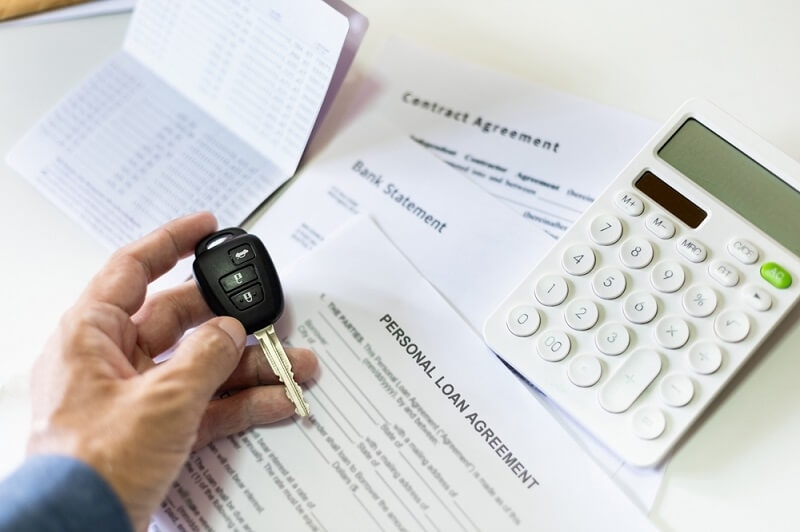
Few financial tools are more versatile than a personal loan when it comes to the management of your funds. Getting the basics of personal loans explained can make a big difference in making smart borrowing choices. Whether you're paying for unexpected medical bills, consolidating debt, or purchasing something large, personal loans present a handy option for borrowing cash. But it's important to know the kinds of personal loans, how they function, and what to expect regarding personal loan interest rates. Knowing the basics and following wise tactics can help you leverage personal loans to your best advantage without succumbing to money traps.
In this guide, we're going to cover everything you need to know about personal loans, including the various structures of loans on offer and tips for new loan users that mean you're borrowing money wisely.
A personal loan is a sum of money, in one lump sum, that you borrow from a bank, credit union, or online lender and repay in installments over an agreed time. Unlike mortgage and auto loans, which are secured against a specific purchase, personal loans can be used to pay for practically anything—medical expenses, vacations, home repairs, or paying off credit cards.
Personal loans are usually unsecured, or they do not require collateral. But there are some lenders who provide secured loans with assets such as savings or cars behind them that could have lower personal loan interest rates.
How personal loans work is important to know before you sign on the dotted line. Here's a step-by-step explanation:
One key tip for beginners: never borrow more than you can reasonably pay back. Adhering to beginner loan advice will keep you out of long-term debt trouble.
Not all loans are created equally. There is a wide variety of personal loans available in the market, each designed for different financial needs:
The most common type of personal loan, an unsecured personal loan, does not require collateral. Instead, approval is based on creditworthiness, and interest rates are associated with your credit score.
Secured personal loans will require collateral, like a car or savings. The downside is that a secured personal loan would likely be associated with lower personal loan interest rates but could also risk losing your asset in the event of default.
They are also used to consolidate multiple debts into a single payment, usually at a lower interest rate than you are currently paying. This allows for an easier payment process, simpler to manage one payment, and may ultimately be cheaper in the long run.
Used for people with bad credit, typically, you will need a co-signer, or someone responsible for repaying your loan if you cannot pay.
Some lenders have personal loans for specific purposes such as home repairs, weddings, or medical bills.
Knowing the different types of personal loans can help you make the right choice for your unique situation.

Interest rates are one of the most important factors to consider when borrowing money. Personal loan interest rates can vary dramatically based on:
Presently, U.S. personal loan rates vary from approximately 6% for excellent credit to 35% or higher for bad credit. Even a few percentage points can have a huge impact on your cost of repayment.
If you’re a new borrower, applying for your first loan can create a sense of uncertainty. These first-time borrower tips will help you make the best choices:
By following these beginner loan tips, you can be able to borrow money sensibly rather than getting into the trap of unnecessary debt.
As you review the concepts discussed in the personal loan basics explained, the key part is borrowing money intelligently. Personal loans can be a positive thing, but only if you are familiar with managing them effectively. Here are strategies for borrowing money sensibly:
Making sure you borrow money sensibly can help ensure loans remain a helpful tool, rather than a hindrance.
Evaluating pros and cons is an important piece of mastering the personal loan basics described above.
Not every financial scenario implies needing to take a personal loan. Personal loans typically make sense when:
Don't use personal loans to make luxury items or non-value-add expenses.
Though with novice loan tips, borrowers commit several errors. Avoid the following:
By following these steps, the process is simplified as the information in the personal loan basics is applied.
As online lending sites gain popularity, requesting personal loans has never been simpler. Technology is speeding time to approval faster, often allowing users to get an instant decision, and in some cases, custom rates are available depending on the borrower. So, as we speed up the process, caveat emptor is still just as relevant as borrowing money sensibly.
Understanding personal loan basics is the first step toward making sound financial decisions. Understanding the various kinds of personal loans and assessing personal loan interest rates is crucial in avoiding the pitfalls of debt; knowledge is your greatest ally. Whether you're a novice borrower who needs some first-time borrower advice or you're being more deliberate about effectively borrowing money, you can use a personal loan effectively if you are smart about it.
Before you borrow, take the time to compare lenders, visually create a repayment schedule, and ensure that borrowing on a personal loan fits within your broader financial goals. Equipped with knowledge and self-discipline, you can put personal loans to work for you—not against you.
This content was created by AI